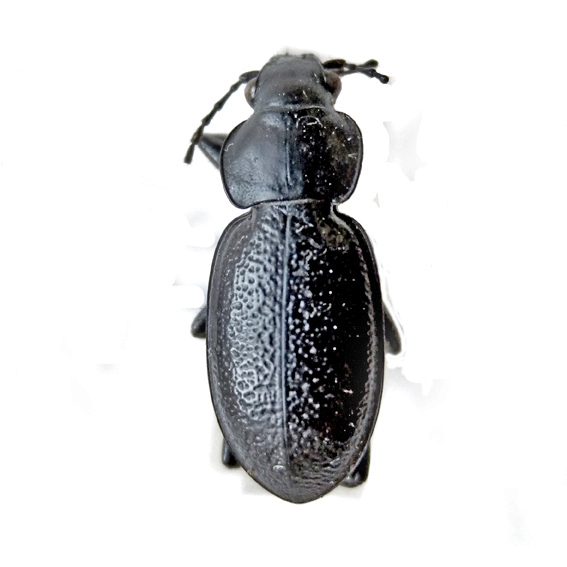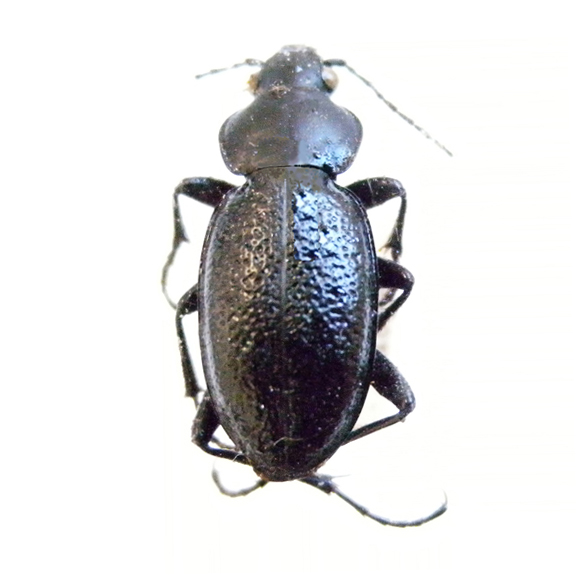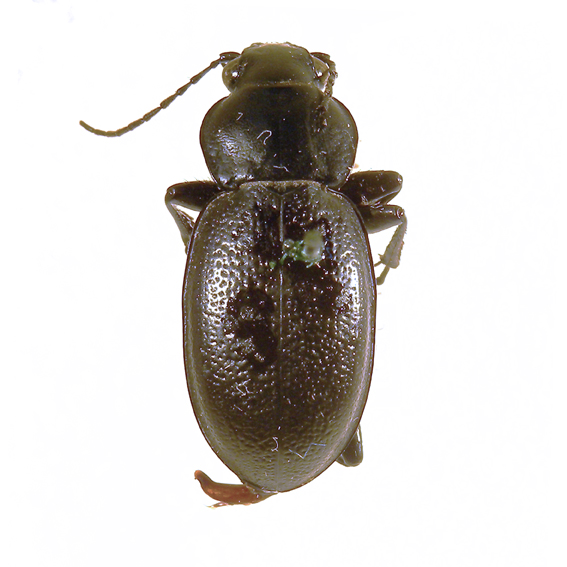Calosoma (Carabomimus) cicatricosum Chaudoir, 1869
Calosoma cicatricosum Chaudoir, 1869: 374 (type material: 1 ♂, given by Dohrn, from environs de Mexico); holotype, originally in coll. Chaudoir, currently in Museum and Institute of Zoology, Warsaw (Mroczkowski, 1960: 377) or lectotype ♂ (no locality label) designated by Deuve (1978: 251) in Muséum National d'Histoire Naturelle, Paris [examined]
Calosoma (Blaptosoma) cicatricosum Breuning, 1928: 53
Blaptosoma (Eutelodontum) cicatricosum Lapouge, 1932: 392
Carabomimus striatulus cicatricosus Jeannel, 1940: 227
Calosoma (Carabomimus) cicatricosum Gidaspow, 1959: 294
Calosoma (Carabomimus) cicatricosum Erwin, 2007: 90
Length 17-20 mm. When described cicatricosum was compared with laevigatum, with respect to which were brought to light the similarities, as for its slender shape, and highlighted the differences, primarily concerning the rough and irregular sculpture of the elytra. Later, it has been considered by Jeannel (1940: 227) as a subspecies of striatulum on the basis of similarity of aedeagus.
The label of the holotype shows no locality details, but the author in the description gives "near Mexico" (city?) as origin of the specimen, and the species has been also found in Morelos (AMNH). In the same area (the state of Morelos and the neighboring state of Mexico) it is also present morelianum. Consequently, in the past, it has been easy the confusion with this last, roughly similar if we consider only the characteristic of the sculpture of the elytra, and from which it can be distinguished with a careful examination, taking into account the slightly larger size, the leaner shape of the body and the pronotum without impressions near hind angles.
Recently, Lassalle & van den Berghe (2011b: 296) have examined the type and reviewed the systematic position of cicatricosum. They concluded that it cannot be regarded as a subspecies of striatulum because the apex of the aedeagus is very different and rather close to the model of laevigatum.
Moreover, considering the scarcity of catches and the fact that the few made were made in places where depressicolle and morelianum are both present, they suggested that cicatricosum may be a hybrid between these two species.
Examined specimens and literature’s data
Mexico. Mexico fed. distr.: surroundings of Mexico, (holotype MNHN); Mexico City (MNHN); Mexico: Altapango near Chalco (Bates, 1884: 262), Amecameca (AMNH)
Notes: Brachypterous. It is nocturnal and in daytime is hidden is hidden under stones and logs of wood in pine and oack forests (Bates, 1884: 262). Adult individuals have been found at an altitude between 2100 and 2500m, in June and September-October (Erwin, 2007: 90).
 Chaudoir, 1869 Mexico (Typus of Calosoma cicatricosum) (coll. Muséum National d'Histoire Naturelle, Paris) |
 Chaudoir, 1869 Mexico city (H. W. Bates, Biol. Cent. Amer.) (coll. Muséum National d'Histoire Naturelle, Paris) |
 Chaudoir, 1869 Mexico, Morelos, Amecameca, Hoge 1891 (coll. American Museum of Natural History, New York) |